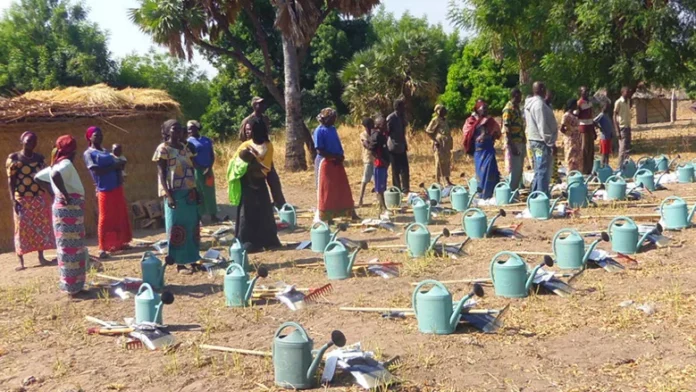Source: Africa Publicity
Each year, World Food Day reminds the world that ending hunger requires shared effort. This year’s theme, “Right to Foods for a Better Life and a Better Future,” emphasises that adequate, safe, and nutritious food is a fundamental human right and highlights the need to create a more equitable and sustainable food system for everyone.
Food insecurity, which is the lack of access to adequate and nutritious food necessary for an active and healthy life, is a global health challenge, especially among low- and middle-income countries. Data from 2024 show that the number of Ghanaians who are food insecure increased from 12.4 million in Q1 2024 to 13.3 million in Q4 2024, representing a 7.3 percent increase in individuals suffering from the lack of food access, availability, and utilisation.
Despite ongoing national and local efforts to combat hunger and food insecurity, the data highlights persistent regional and gender disparities. The Volta Region recorded the highest incidence of food insecurity in Q1 2024 at 51.5 percent which increased slightly to 52 percent in Q4 2024. In contrast, the Greater Accra Region recorded the lowest incidence of food insecurity in Q1 2024 at 20.2 percent which increased to 29 percent in Q4 2025.
The gender gap in food insecurity remains significant. The proportion of female-headed households that were food insecure increased from 40.4 percent in Q1 2024 to 44.0 percent in Q4 2024, while that of male headed households increased from 32.4 percent to 37.1 percent in the same period. Food insecurity is more prevalent among female headed households compared to male headed households, with a persistent gender gap of about 7.0 percentage points in 2024.
Food insecurity is closely linked to poor child health outcomes. In 2024, the proportion of households with underweight children under five years experiencing food insecurity increased from 38.0 percent in Q1 to 44.9 percent in Q4. In contrast, among households with children under five experiencing wasting, the prevalence declined slightly from 46.2 percent to 43.5 percent over the same period. This finding suggests that nutritional vulnerability persist among households having children with poor health outcomes.
On the relationship between food insecurity and non-monetary poverty, persons who are food insecure and multidimensionally poor increased by 400,000, from 3.7 million in Q1 2024 to 4.1 million in Q4 2024. This reinforces the need for integrated policy responses that address multiple deprivations such as income, health, education, and living standards simultaneously.
As Ghana works towards achieving SDG 2 (End hunger; achieve food security and improved nutrition; and promote sustainable agriculture), policy actions should prioritise coordinated, data-driven interventions that enhance food availability, improve access to nutritious diets, and promote sustainable production systems.
Strengthening support for smallholder farmers, promoting climate-resilient agriculture, bridging regional and gender gaps, and fostering stronger partnerships among government, development partners, and communities are critical for ensuring that no household is left behind in the fight against hunger.
Food insecurity is not inevitable. With the right data, the right policies, and the right partnerships, every Ghanaian can have access to safe, nutritious, and affordable food. The time to act is now, so that no table is left empty.








